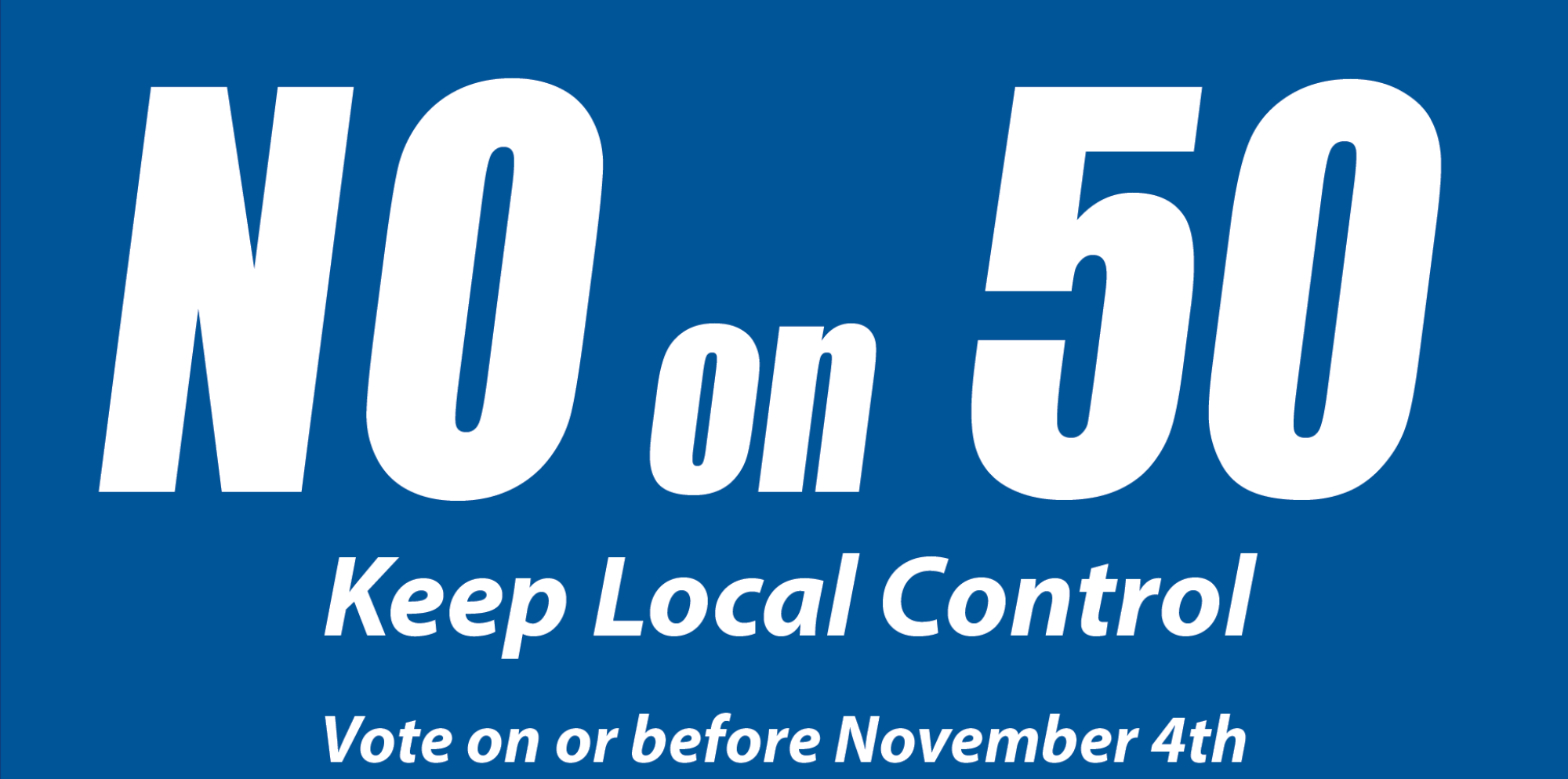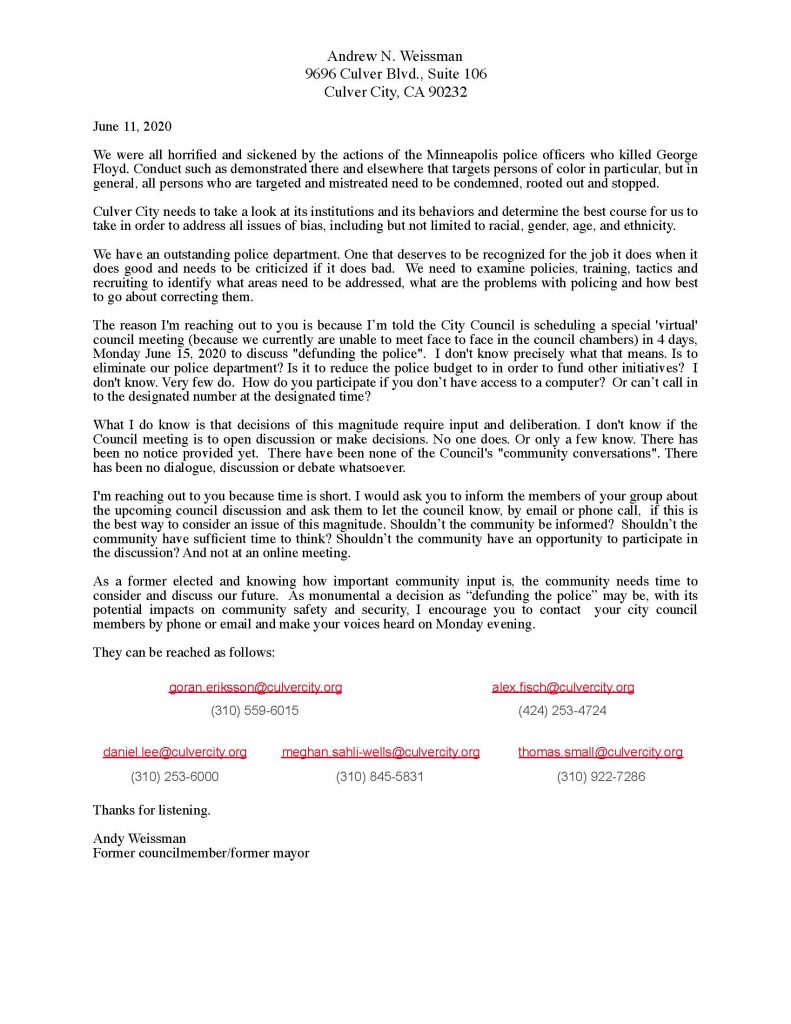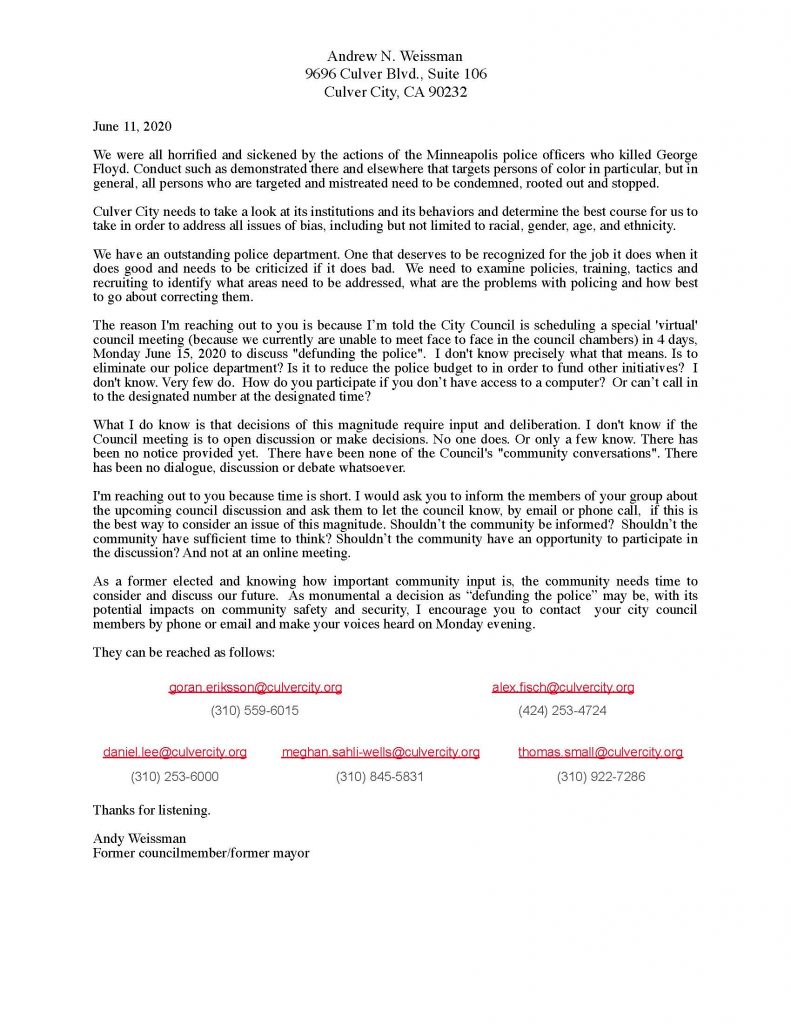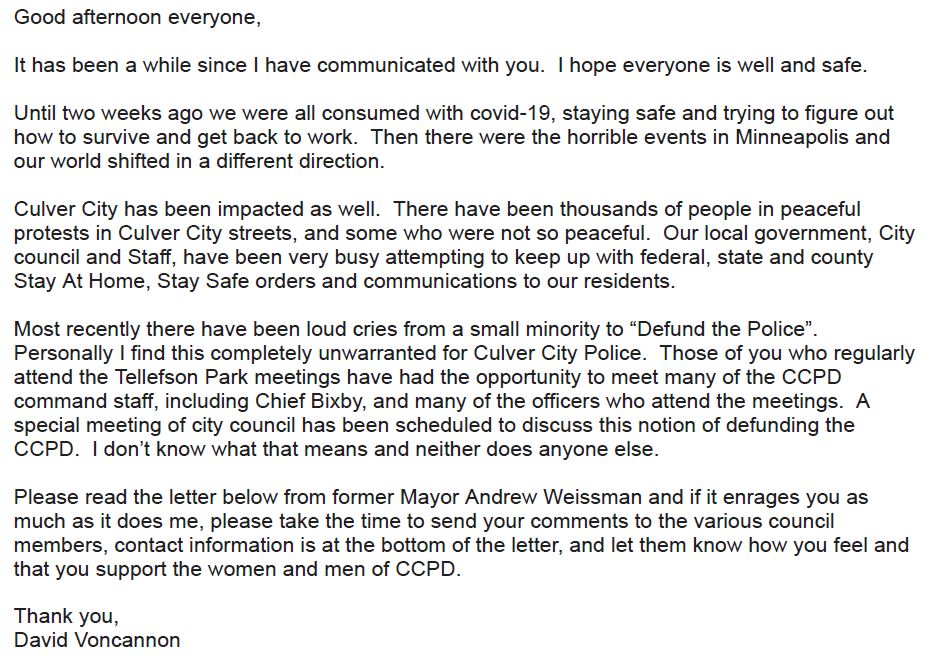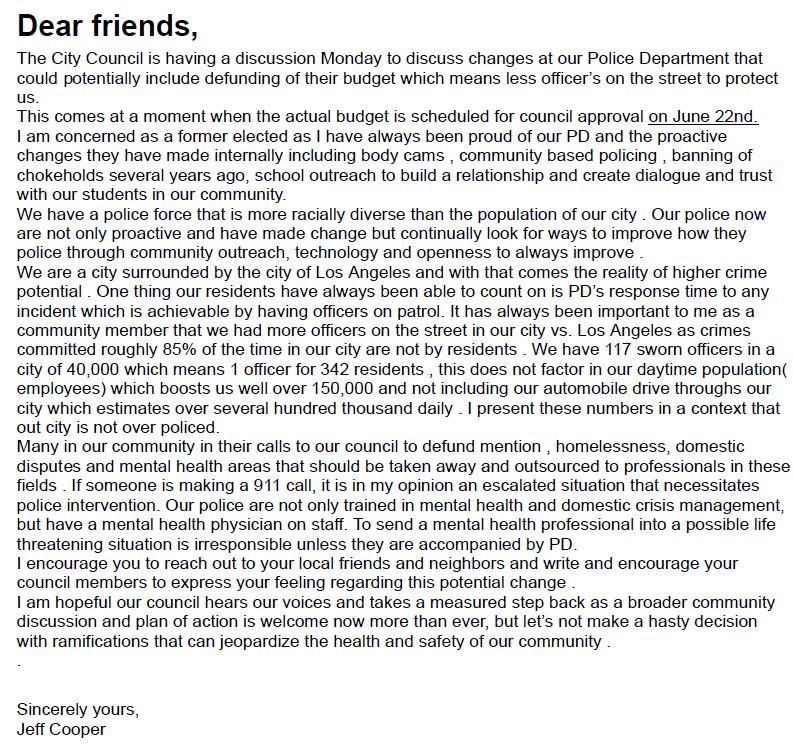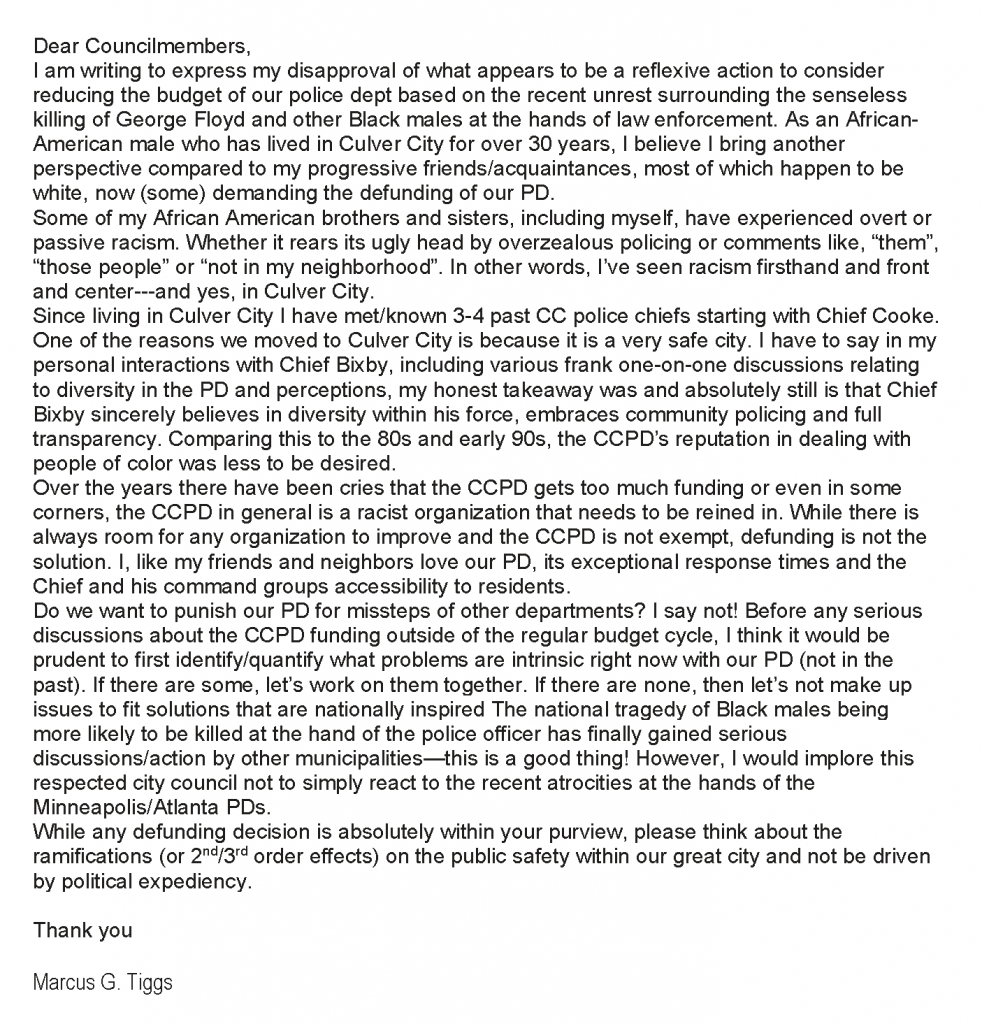Did they want to get rid of single family zoning in Culver City?
In a word, yes.
At Council meeting Monday the 22nd we asked questions about item A-4 resolution on housing policy. We didn’t have access to this resolution until three days before the meeting. Fortunately, they tabled a vote on this resolution until April 12th, in the interest of not debating past midnight. But our worst suspicions were unfortunately confirmed. This resolution would green-light the entire city to be rezoned and redeveloped.
Vice-Mayor Lee denied that this resolution would eliminate single family zoning in Culver City. Mayor Fisch claimed that statewide regulations already allow a triplex on every lot – alluding to the allowance of an ADU and junior ADU on each lot and not a bonafide triplex.
The supporting speakers at the meeting betrayed their intentions. This resolution reads much like the aborted SB50, which would have eliminated single family zoning in any area deemed job or transit rich (Culver City is argued to be both). Furthermore, by claiming to “equitably distribute” this upzoning, it leaves no neighborhood in our city safe from limitless upzoning.
Councilmembers Vera and Eriksson both expressed their doubts about this resolution. Namely, that they didn’t get a chance to even see it until it was publicly released three days before the meeting. They shared our concern about its lack of clarity, and that passing it would hand over the city to developers in the name of anti-racism.
While council danced around the issue during this council meeting, their intentions were made known during the joint council/planning commission meeting in January. Here, both Lee and Imani-McMorrin declared outright that single family zoning is racist and needs to be eliminated. Fisch didn’t go so far, but said single family zoning is classist, and class is rooted in race.
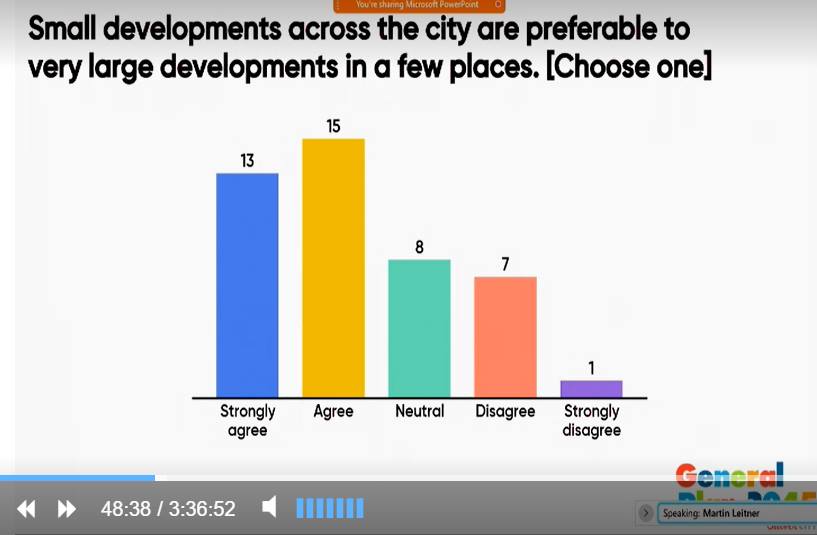
Fisch also made the disingenuous claim that rezoning for multifamily would bring us more of our old fashioned “bungalow courtyards” and other post-war construction. This is a particular sticking point for us. We claimed rent control would drive such multifamily buildings off the market to be redeveloped into modern condos. These rent out for 2-3x the rent of current multifamily, even when you can compare the two. We’d repeatedly asked Council to make exemptions to preserve these older mom and pop multifamily units. Council’s only reaction was to campaign against our ballot measure.
Again, both Vera and Eriksson both stated their opposition to such radical rezoning plans. Eriksson claimed that this kind of rezoning would doom ordinary people to permanently renting in expensive units. Vera expressed concerns at what this would do to the character of our city.
We recommend everyone watch the video from the joint council/planning commission meeting – namely council’s comments starting at 2h20m – and become familiar with Council’s rezoning debate ahead of the April 12th meeting. Then share your concerns with the councilmembers. Feel free to BCC us at contact@protectculvercity.org if you do e-mail them.
The councilmembers speak at the following times:
McMorrin: 2h20m
Vera 2h28m
Eriksson 2h32m
Lee 2h46m
Fisch 3h06m
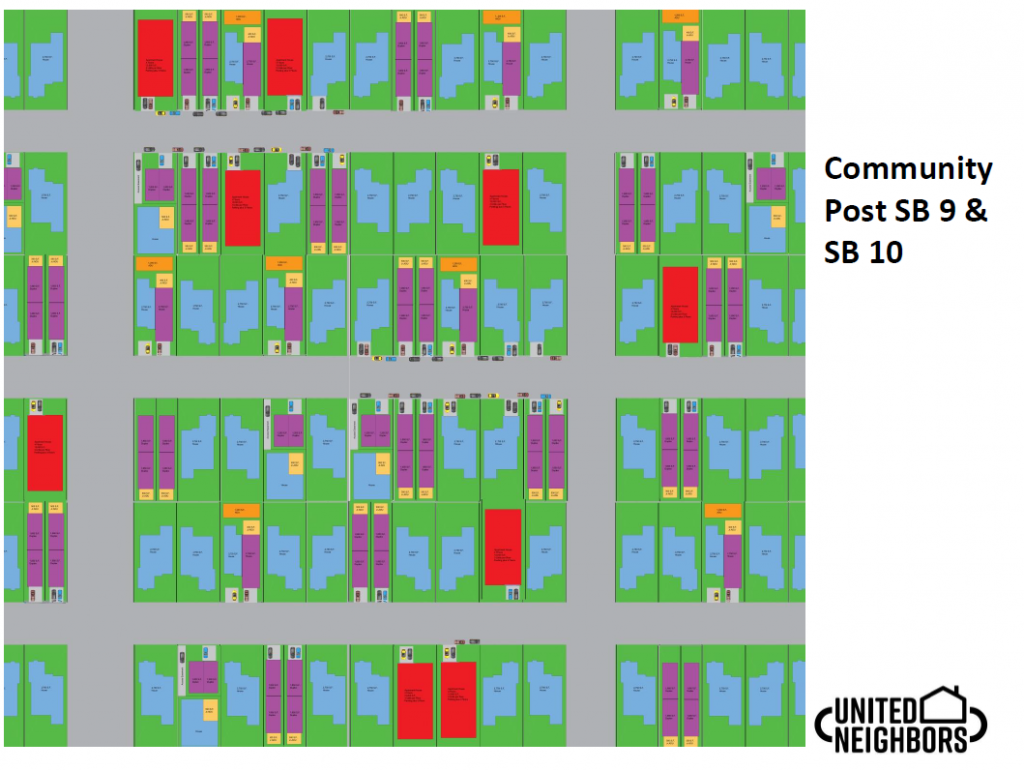
We also recommend people familiarize themselves with the state’s greater upzoning debate. Namely SB9 and SB10, which emulate what SB50 wanted to do (including 10 unit buildings on a lot). This report from United Neighbors is a good summary.
